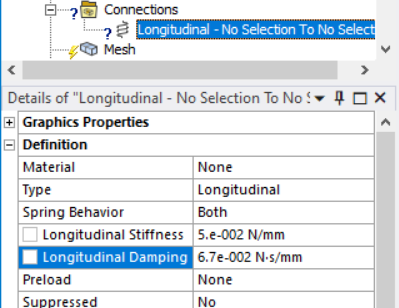TAGGED: transient-structural
-
-
December 18, 2023 at 8:31 am
-
December 20, 2023 at 11:41 am
mjmiddle
Ansys Employee-
December 20, 2023 at 11:48 am
murali
SubscriberSo unlike in the normal alpha and beta damping that we enter for analysis, this value will generate a force corresponding to the instantaneous velocity of the system, right?
-
-
December 20, 2023 at 1:40 pm
mjmiddle
Ansys EmployeeYes, it is only based on the velocity of the spring node.
-
December 20, 2023 at 2:13 pm
murali
SubscriberThanks a lot.
-
-
Viewing 2 reply threads
- The topic ‘Applying Damping force propotional to velocity’ is closed to new replies.
Innovation Space


Trending discussions


- The legend values are not changing.
- LPBF Simulation of dissimilar materials in ANSYS mechanical (Thermal Transient)
- Convergence error in modal analysis
- APDL, memory, solid
- How to model a bimodular material in Mechanical
- Meaning of the error
- Simulate a fan on the end of shaft
- Real Life Example of a non-symmetric eigenvalue problem
- Nonlinear load cases combinations
- How can the results of Pressures and Motions for all elements be obtained?
Top Contributors


-
4007
-
1461
-
1287
-
1124
-
1021
Top Rated Tags


© 2025 Copyright ANSYS, Inc. All rights reserved.
Ansys does not support the usage of unauthorized Ansys software. Please visit www.ansys.com to obtain an official distribution.








